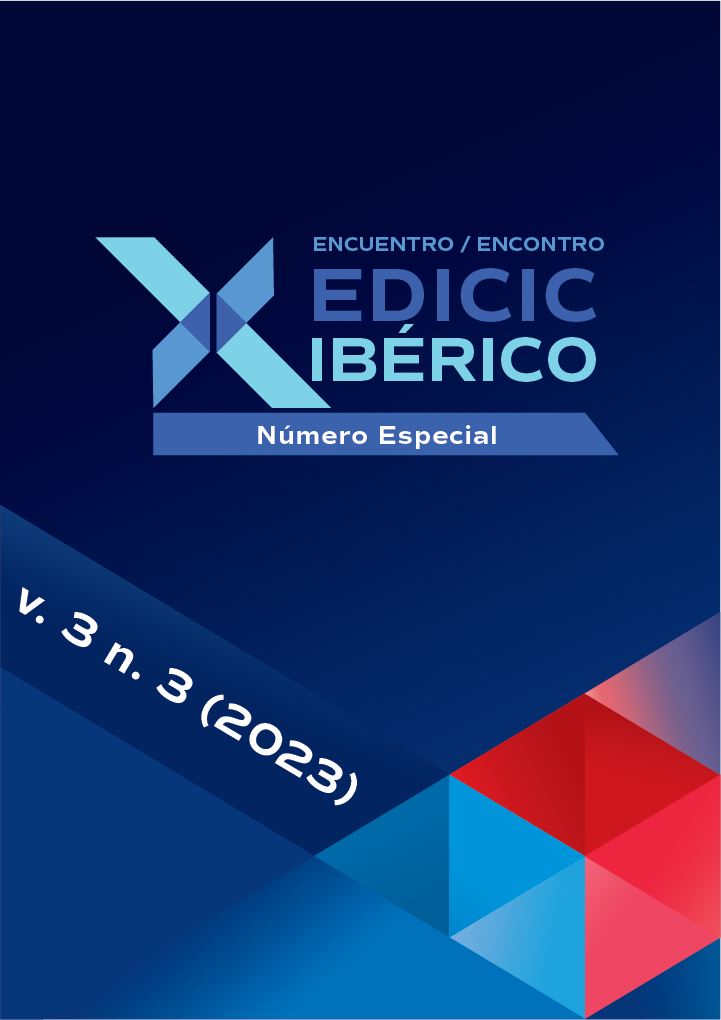Text classification: an approach using machine learning
DOI:
https://doi.org/10.62758/re.v3i3.212Keywords:
Classification, Machine Learning, Algorithms, Information, Information ScienceAbstract
Text classification has been employed as a foundation for organizing knowledge across a wide range of fields, as it allows for the grouping of categories to guide the segmentation of these domains. In the digital information age, where there is an abundance of data spread across cloud computing environments, the use of informational technologies is essential to facilitate the classification process of this data. Within this framework, Information Science plays a pivotal role in the production, organization, transmission, and utilization of information across diverse fields, including computer science, mathematics, artificial intelligence, among others. Through technology, when information is appropriately classified, it can be made available to society more effectively. The primary aim of this article is to address contexts regarding text classification using Machine Learning. This research is exploratory, adopting an experimental method, and employs a quantitative approach as its data analysis technique. As a result, after utilizing the Euclidean distance algorithm, a distance matrix and hierarchical grouping were established, along with a word cloud, highlighting terms of significance from the documents.
References
Aggarwal, C. C., Zhao, Y., e Yu, P. S. (2014). On the use of side information for mining text data. IEEE Transactions on Knowledge and Data En-gineering, 26(6):1415–1429. DOI: https://doi.org/10.1109/TKDE.2012.148
Aha, David W; KIBLER, Dennis; ALBERT, Marc K. Instance-based learning algorithms. Machine learning 6.1, p. 37-66, 1991. DOI: https://doi.org/10.1007/BF00153759
Barite, M.G., The Notion of “Category”: Its Implica-tions in Subject Analysis and in the Construction and Evaluation of Indexing Languages. School of Library Science University of the Republic of Uruguay. 2000.
Bekkerman, R. e Allan, J. (2004). Using bigrams in text categorization. Relatório Técnico IR-408, Center of Intelligent Information Retrieval, UMass Amherst.
Bennett, J., Orange Data Mining, in https://www.predictiveanalyticstoday.com/Orange-data-mining/. 2018. Acesso em 03 de maio de 2023.
Breve, F. A., Zhao, L., Quiles, M. G., Pedrycz, W., e Liu, J. (2012). Particle competition and coope-ration in networks for semi-supervised lear-ning. IEEE Transactions on Knowledge and Da-ta Engineering, 24(9):1686–1698. DOI: https://doi.org/10.1109/TKDE.2011.119
Burke, W. W., & Nourmair, D. A. (2001). The role of personality assessment in organization development. In J. Waclawski & A. H. Church (Eds.), Organization development: A data-driven approach to organizational change (pp. 55-77). Jossey-Bass.
Campos, M.L.A.; Gomes, H.E.; Oliveira, L.L. As Categorias de Ranganathan na organização dos conteúdos de um portal científico. Data-GramaZero, Rio de Janeiro, v. 14, n.3, jun. 2013.
DiFonzo, N., & Bordia, P. (2007). Rumor psychology: Social and organizational approaches. American Psychological Association. DOI: https://doi.org/10.1037/11503-000
Prado, H. A. do, E. Ferneda, E., editors (2008). Emerging Technologies of Text Mining: Techni-ques and Applications. Information Science Re-ference.
Fayyad, U.M., G.Piatetsky–Shapiro, P.Smyth. Kno-wledge Discovery and Data Mining: Towards a Unifying Framework. Proceeding of the Second International Conference on Knowledge Disco-very and Data Mining (KDD-96), Portland, Ore-gon, august, 1996.
Forman, G., An Experimental Study of Feature Se-lection Metrics for Text Categorization. Journal of Machine Learning Research, 3 2003, pp. 1289-1305
Galvão, N. D.; Marin, H. F. Técnica de mineração de dados: uma revisão da literatura. Acta Paulista de Enfermagem, São Paulo, v.22, n.5, p. 686-690, 2009. DOI: https://doi.org/10.1590/S0103-21002009000500014
Goldberg, David E; HOLLAND, John H. Genetic algo-rithms and machine learning. Machine lear-ning 3.2, p. 95-99, 1988. DOI: https://doi.org/10.1023/A:1022602019183
He, W., Zha, S. & Li, L. social media competitive analysis and text mining: A case study in the pizza industry. International Journal of Infor-mation Management, 33(3), 464-472. 2013. DOI: https://doi.org/10.1016/j.ijinfomgt.2013.01.001
Ignoatto M. L., Webber C. G., “Inteligência Competi-tiva nas Mídias Sociais: Um Estudo de Caso na Moda”. Revista SCIENTIA CUM INDUSTRIA, V. 7, N. 2, PP. 156 — 164, 2019 DOI: https://doi.org/10.18226/23185279.v7iss2p156
Ikonomakis, M; kotsiantis, Sotiris; Tampakas, V. Text classification using machine learning tech-niques. WSEAS Transactions on Computers 4.8, p. 966-974, 2005.
King, M. L., Jr. (2010). Stride toward freedom: The Montgomery story. Beacon Press.
Kotsiantis, Sotiris B; zaharakis, I; pintelas, Pa-nayiotis. Supervised machine learning: A re-view of classification techniques. p. 3-24, 2007 DOI: https://doi.org/10.1007/s10462-007-9052-3
Kriegel, David. A brief introduction to neural networks. 2007.
Leopold, Edda & Kindermann, Jörg, "Categorização de Texto com Máquinas V etoriais de Apoio". Como representar textos no espaço de entra-da", Machine Learning 46, 2002, pp. 423 - 444. DOI: https://doi.org/10.1023/A:1012491419635
Madsen R. E., Sigurdsson S., Hansen L. K. e Lansen J., "Pruning the Vocabulary for Better Context Recognition", 7th International Conference on Pattern Recognition, 2004 DOI: https://doi.org/10.1109/ICPR.2004.1334270
Mazzochi, F. Gnoli, C. S.R. Ranganathan´s PMEST Categories: Analyzing their Philosophical Back-ground Cognitive Function. Information Studies, v.16, p. 133-147, 2010.
Posluszny, D., Spencer, S., & Baum, A. (2007). Post-traumatic stress disorder. In S. Ayers, A. Baum, C. McManus, & et al. (Eds.), Cambridge handbook of psychology, health and medicine (2nd ed.). Cambridge University Press.
Rossi, Rafael G., Classificação automática de textos por meio de aprendizado de máquina baseado em redes. Tese – Programa de Pós-graduação em Ciências de Computação e Matemática Computacional. ICMC/USP. São Carlos. 2015
Sebastiani, F. (2002). Machine learning in automa-ted text categorization. ACM Computing Sur-veys, 34(1):1–47. DOI: https://doi.org/10.1145/505282.505283
Skinner, Burrhus F. Are theories of learning neces-sary? Psychological review 57.4, p. 193, 1950. DOI: https://doi.org/10.1037/h0054367
Somers, C. L., Day, A. G., Niewiadomski, J., Sutter, C., Baroni, B. A., & Hong, J. S. (2018). Under-standing how school climate affects overall mood in residential care: Perspectives of ado-lescent girls in foster care and juvenile justice systems. Juvenile & Family Court Journal, 69(4), 43-58. https://doi.org/10.1111/jfcj.12120. DOI: https://doi.org/10.1111/jfcj.12120
Soucy P. e Mineau G., "Feature Selection Strategies for Text Categorization", AI 2003, LNAI 2671, 2003, pp. 505-509. DOI: https://doi.org/10.1007/3-540-44886-1_41
Uysal, A. K. e Gunal, S. (2014). The impact of pre-processing on text classification. Information Processing & Management, 50(1):104–112. DOI: https://doi.org/10.1016/j.ipm.2013.08.006
Downloads
Published
How to Cite
Issue
Section
License
Copyright (c) 2023 Revista EDICIC

This work is licensed under a Creative Commons Attribution 4.0 International License.
The Association holds the copyright of the texts it publishes and, therefore, adopts a Creative Commons License, CC BY 4.0 DEED Attribution 4.0 International (https://creativecommons.org/
You are free to:
- Share: copy and redistribute the material in any medium or format for any purpose, even commercially.
- Adapt: remix, transform, and build upon the material for any purpose, even commercially.






